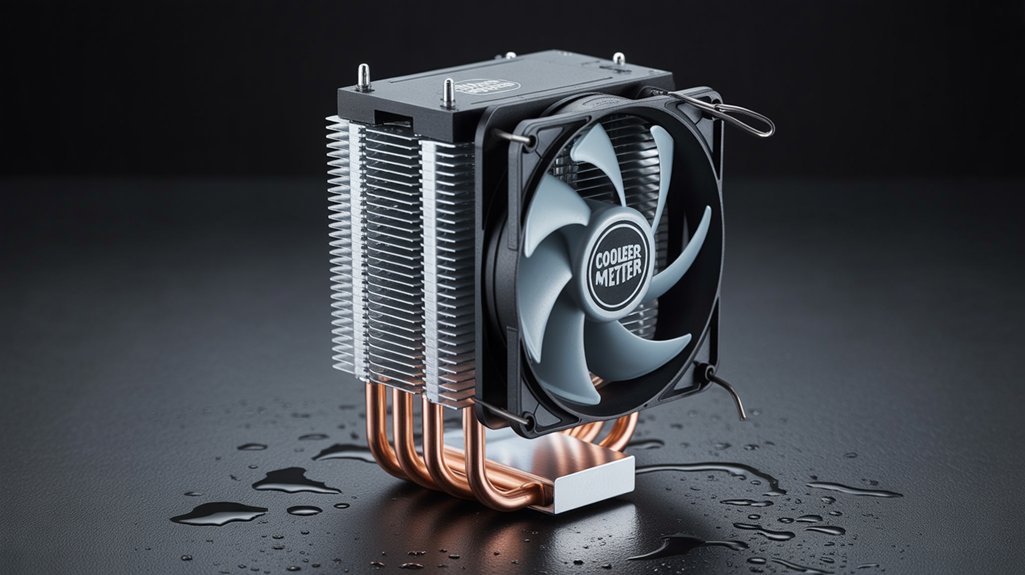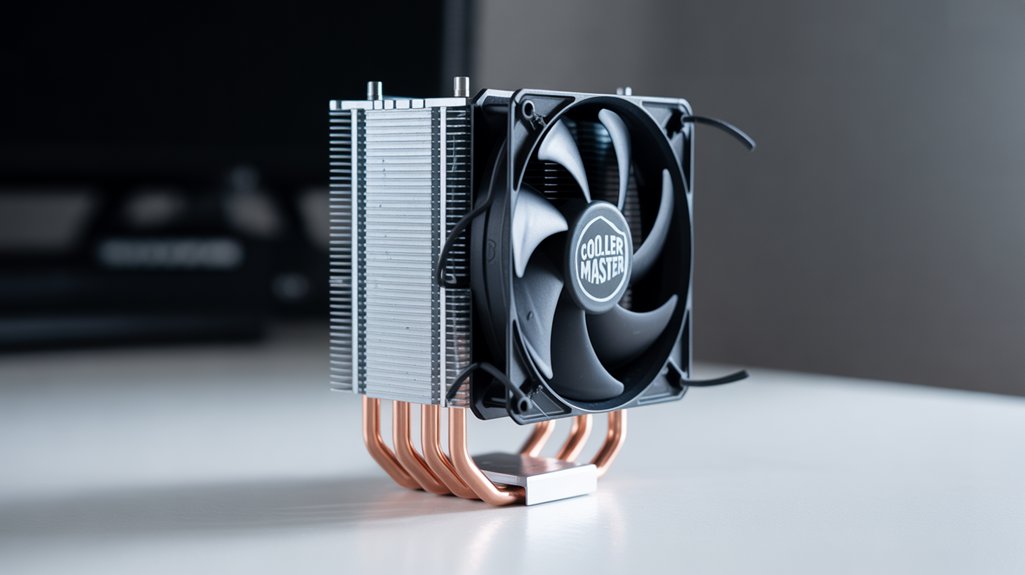The Cooler Master Hyper 212 Evo remains a benchmark CPU cooler in the budget-to-mid-range segment, attracting builders through its proven four-heat-pipe design and 120mm PWM fan configuration. This tower-style cooler demonstrates consistent thermal management across multiple socket types while maintaining relatively low acoustic output. However, its performance claims require scrutiny against modern alternatives and varying system configurations to determine whether its reputation translates into measurable advantages for contemporary builds.
Design and Build Quality
The Cooler Master Hyper 212 Evo employs a traditional tower-style architecture that combines four 6mm copper heat pipes with an aluminum fin array to create an effective heat dissipation system.
The direct contact heat pipes establish thermal transfer from the CPU surface, while the aluminum fins maximize surface area for air cooling.
Material durability is evident through the robust construction, featuring nickel-plated copper heat pipes that resist corrosion.
The 120mm PWM fan utilizes wave-shaped blade geometry for optimized airflow distribution.
Cooling aesthetics remain utilitarian, prioritizing function over visual appeal with its conventional black and aluminum finish.
Thermal Performance and Noise Levels

Comprehensive thermal testing reveals the Hyper 212 Evo delivers well-balanced cooling performance across varying CPU loads and ambient conditions.
The four 6mm copper heat pipes effectively transfer thermal energy from the CPU to the aluminum fin array, maintaining optimal thermal efficiency during sustained workloads.
Fan operation ranges from 600-2000 RPM, generating 24.9-82.9 CFM airflow while producing 9-36 dBA noise levels.
The PWM-controlled 120mm fan creates distinct sound profiles at different speeds, remaining virtually silent during light tasks and producing moderate acoustic output under maximum thermal load.
Wave-shaped blade design optimizes airflow while minimizing turbulence-induced noise.
Installation and Compatibility

Multiple socket compatibility options position the Hyper 212 Evo as a versatile cooling solution across both Intel and AMD platforms.
Socket support encompasses LGA2066, LGA2011-v3, LGA2011, LGA1366, LGA1200, LGA1156, LGA1155, LGA1151, LGA1150, plus AMD’s AM4, AM3+, AM3, AM2+, AM2, FM2+, FM2, and FM1 configurations.
The comprehensive mounting hardware accommodates diverse motherboard layouts effectively.
Installation procedures follow standard tower cooler protocols, requiring backplate mounting and securing the heat sink assembly.
The user friendly setup process typically completes within fifteen minutes for experienced builders, though first-time installers may require additional time for proper orientation.
Conclusion
The Cooler Master Hyper 212 Evo demonstrates solid engineering fundamentals through its four-heatpipe tower architecture and PWM-controlled 120mm fan configuration. Thermal dissipation capabilities prove adequate for mainstream processors while maintaining acceptable acoustic output within the 9-36 dBA range. Cross-platform socket compatibility and simplified mounting mechanisms enhance practical utility. The unit’s construction quality aligns with its price positioning, delivering reliable cooling performance without premium features. Overall execution meets expectations for budget-conscious thermal management solutions.


